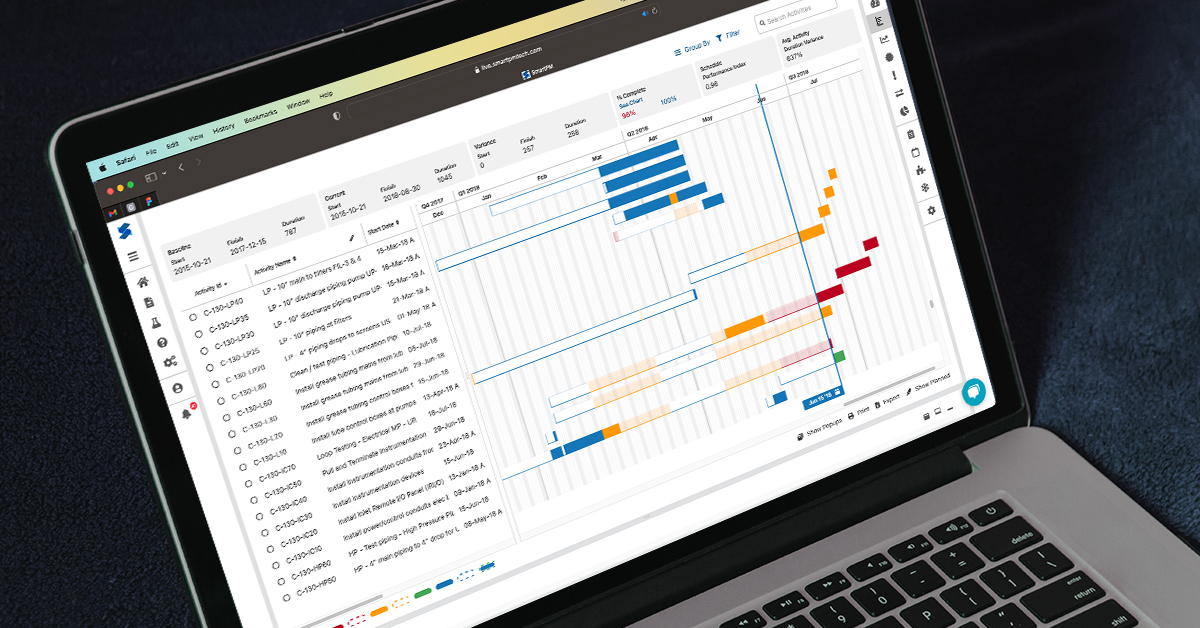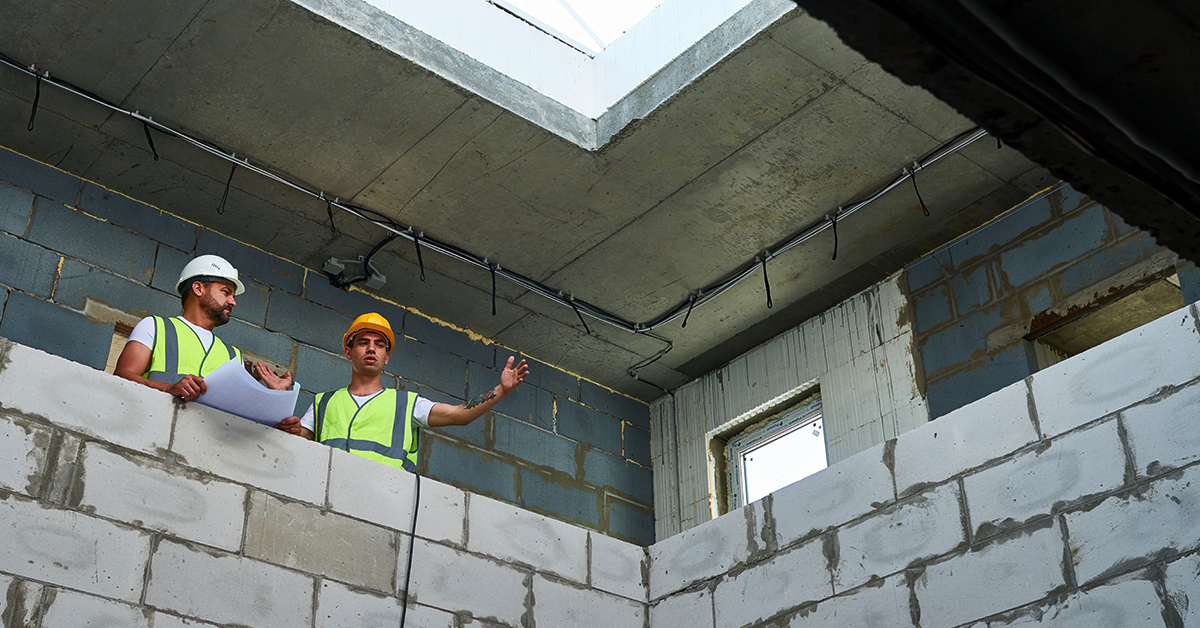Making sense of all of your data from all of your projects can feel like trying to understand a foreign language. But, when we break it down into steps, it starts to make a lot more sense.

- News
7 Proactive Steps to Avoid Construction Project Claims
Construction disputes reached an all-time high last year. According to Arcadis, the average value of disputes soared to $42.8M at the end of 2022, up from $30.1M the year prior. The main contributor? The same company pinpointed the issue as “poorly drafted or incomplete and unsubstantiated claims.” The good news is that with proactive, well-documented analysis, you can take steps to avoid construction project claims and subsequent disputes. It all comes down to a choice between objectivity and subjectivity.
The Significance of Objectivity for Claims Consulting
Embracing an objective, fact-based approach reduces your risk during the dispute resolution process. Additionally, it provides clarity regarding the genuine impacts on your projects, including causation.
Objective analysis paves the way for an iron-clad settlement strategy, offering a duel benefit of addressing internal project issues. As these internal challenges are resolved, it paves the way for smoother execution in future projects. Additionally, my extensive experience, gained from conducting such analyses for numerous clients, has provided me with valuable insights into the root causes of losses an claims.
So, here is a list of things companies can do to minimize losses and mitigate claims effectively.

1. Prepare a Cost-Loaded or Resource-Loaded CPM Schedule.
Developing a cost or resource-loaded CPM schedule is the first step any project should take. These schedules establish and document a workforce plan, timeline, and intended flow for their work. This is beneficial for two reasons:
- It is the basis for measuring impacts and variances to both cost and schedule in a construction project claim setting.
- It serves as a great project management tool.
Think through the workforce, durations, and workflow required at the beginning of a project in great detail. Doing so greatly reduces the risk of a project becoming delayed and over budget.
2. Use a CPM Schedule to Manage the Project, Not as a Reporting Tool.
The majority of construction project claims result from impacts and delays over time. However, as a claims consultant, I noticed that the schedules analyzed on these projects consistently showed a static end date, indicating schedule compression.
While compressing a schedule might seem achievable, many of these projects used this tactic to the point that the schedule was unachievable. When that happens, the schedule is no longer a management tool. Rather, it becomes a means to indicate the project is progressing as planned. Inevitably, the truth presents itself after over-compression leads to cost overruns.
CPM scheduling technology is highly useful, but only if you adopt a realistic approach. If your project experiences delays, take note of the delay within the schedule. Then, discuss it with the teams involved to develop and document a mitigation plan. Do not remove logic and shorten durations unless you’ve discussed it as part of your mitigation strategy.
Crashing your schedule consistently results in silent, unknown losses. Avoid over-compression as much as possible so your schedule can be used to manage your project.
3. Track Actual Workforce Required in a Detailed Fashion.
While the workforce required is tracked on most projects for accounting purposes, it is rarely captured as a way to understand productivity. Productivity should be studied at the activity level as per the CPM schedule. At the least, it should be tracked for every trade in every area of the project–i.e., on each floor.
Productivity data should be captured daily for all work on the job site. If X number of people worked on an activity, take note of the number of people and duration of time spent. This information is paramount to controlling costs and schedules. Modern tools like SmartPM simplify schedule data analysis, eliminating the need for extensive manual efforts.

4. Build a Detailed “As-Built” Schedule.
As a construction claims consultant, the first thing I did upon being assigned to a project was to create a detailed “as-built” schedule. This is not your standard software’s “as-built” printout, as these tend to lack significant historical data.
While start and finish dates and monthly percentage completes are useful, they are not enough to handle a claim, much less a dispute. You need data that pinpoints and manages impacts as they are happening.
Detailed “as-built” schedules include this type of useful data. They give information for understanding the work impacted by delays – and why. This makes them advantageous for claim and dispute resolution. It only takes 15 minutes daily to construct and is worth its weight in gold.
5. Regularly Study Impacts and Causation.
Before you can study impacts and causation, be sure you have done the following.
- Created a cost- or resource-loaded baseline schedule.
- Updated and utilized it to accurately reflect the planned course of action on a regular basis.
- Tracked detailed workforce breakouts on a daily basis.
- Used that information to build a robust “as-built” schedule in real time.
After following these steps, you can understand impacts and causation at any given point of the project lifecycle.
A main contributor to delays and overruns in construction is the lack of knowledge of critical impacts in real-time. Many critical delays and impacts identified during the claims process begin as minor issues and then snowball into major problems from which projects cannot recover. The sooner you identify critical delays and impacts, the better the chance of overcoming them.

6. Discuss Problems When They Arise.
While discussing project problems might seem like your worst nightmare, it offers an avenue for collaboration. CPM schedules are highly useful for this. They are an excellent information tool, as they hold the main points of discussion for collaborative project management.
If construction companies establish open lines of communication, projects inevitably run more smoothly. With honest reporting comes more trust, meaning fewer disputes and stronger relationships in the long run.
7. Document the Outcome of Delay Discussions
The final step is for posterior protection. When millions of dollars are at stake, there is a tendency for verbal conversations to be misinterpreted or forgotten. So, ensure all discussions surrounding impacts, mitigation strategies, acceleration requests, and the like are documented. This ensures you have the necessary information during project closeout. Project correspondence like RFIs, COs, and letters are great; emails work just as well.
Overcoming Construction Project Claims
Establishing a protocol to ensure these items are implemented into project management is paramount to safeguarding your projects from construction project claims and disputes. By embracing objectivity, meticulous planning, open communication, and thorough documentation, you can significantly reduce the risk of claims and lay the foundation for successful and dispute-free construction projects in the future.
RELATED STORIES

Making Construction Data Analytics Easier to Understand
Making sense of all of your data from all of your projects can feel like trying to understand a foreign language. But, when we break it down into steps, it starts to make a lot more sense.

Overcoming Confirmation Bias in Construction Project Management
Confirmation bias can be particularly problematic in project and schedule management, where decisions must be based on accurate and comprehensive information.

Top Construction Scheduling Software in 2023
SmartPM’s recognition as a top construction scheduling software in 2023 attests to the immense value in automated project controls.

Putting the ‘Smart’ in Project Management with Project Controls
Project controls are not just a subset of project management; they are its backbone, focusing on meticulous monitoring and analysis.

